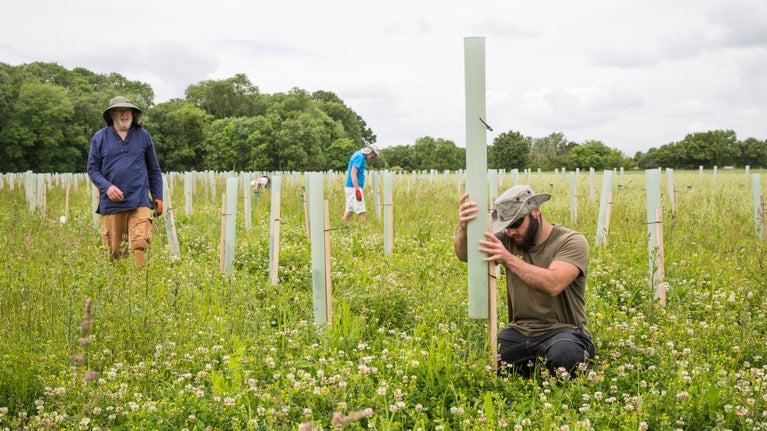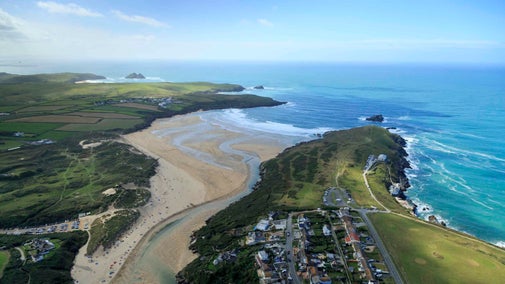
Tackling climate change
Uncover how we’re responding to the changing climate at places in our care.

We look after more than 890 miles of coastline in the UK, and part of our job is to respond to challenges like coastal erosion. Climate change is contributing to rising sea levels and more severe storms, quickening the pace of change around our coasts. Thanks to your support, we’re finding ways to adapt to – rather than fight – our shifting shores.
Powerful winter storms can dramatically change the coastal places we love overnight. In 2013 and 2014 our coastline was battered by a series of storms and high tides, which resulted in several years' worth of erosion over a few days. Building hard coastal defences as the only response to managing coastal change in the future now looks increasingly unrealistic.
The Intergovernmental Panel on Climate Change (IPCC) report makes it clear that we need to support adaptation. This means that rather than trying to simply stop change, such as coastal erosion, we plan ahead for change, protecting wildlife and adapting our own buildings and activities.
Working with nature is important to us. By understanding what’s happening to the natural environment around our coast we can make well-informed choices about whether and where to continue maintaining hard sea defences, or to adapt and work with nature rather than against it.
Natural sea defences can also become havens for wildlife. At Freshwater West beach in Pembrokeshire, for example, we’ve taken 100 acres of dune grassland out of active farming and allowed nature to take its course. We’ve also restored reedbeds and fen meadows so that, as water levels increase, they can still accommodate the richest flora possible.

We also want to ensure that there’s space and land to accommodate future changes at our coast, at places like Birling Gap in East Sussex and Mount Stewart in County Down. By ‘rolling back’ we can relocate buildings, infrastructure, shoreline and habitats to ensure we maintain access to the coast for everyone, as well as providing new homes for wildlife.
We now have coastal adaptation strategies in place at our coastal hotspots across England, Wales and Northern Ireland.
It’s important to us to view the coast as a whole and to not just consider the areas we care for in isolation. By working with other landowners, communities, beach users and with local government we can create more joined up and better managed stretches of coastline.
We want to innovate – to have the courage to try out new ideas, and to be driven by long-term, sustainable plans.

In 1965, we launched our coast fundraising campaign in response to growing fears that development was slowly destroying the nation’s natural coastline. Five decades on, the campaigning spirit and generosity of thousands of people has helped us raise more than £90 million. This has allowed us to open and maintain our coastline for the millions of people who enjoy it every year.
Looking after our coastal land now costs about £3,000 per mile, per year. Your membership and donations support our coastal conservation projects, and every time you use a National Trust coastal car park, income goes straight back into managing and conserving the surrounding area.

Uncover how we’re responding to the changing climate at places in our care.

Climate change is the single biggest threat to the places we care for. Take a look at our environmental pledges as we adapt, reduce carbon emissions and address the damage already done.

What impact is climate change having on the wildlife and habitats of the Mount Stewart estate?

Read about the changing coastline at Birling Gap and the Seven Sisters and discover how the National Trust is planning for the future in this changing landscape.

The coast is an everchanging environment, constantly being reshaped by the waves, winds and tides. Climate change is likely to increase the rate of coastal change that we experience at Studland. That is why it is important that we act now to understand how the coastline might change, and how we can best adapt to this change.

Cwm Ivy has undergone a transformational change since the sea wall breached in 2014. Find out more about this process and the reasons behind it happening.

Learn about the coastal changes taking place at Crantock Beach with its dynamic dune system.
Learn about how we're creating wetlands at Cotehele, Cornwall, which is helping control flood waters while providing a wildlife-rich environment.